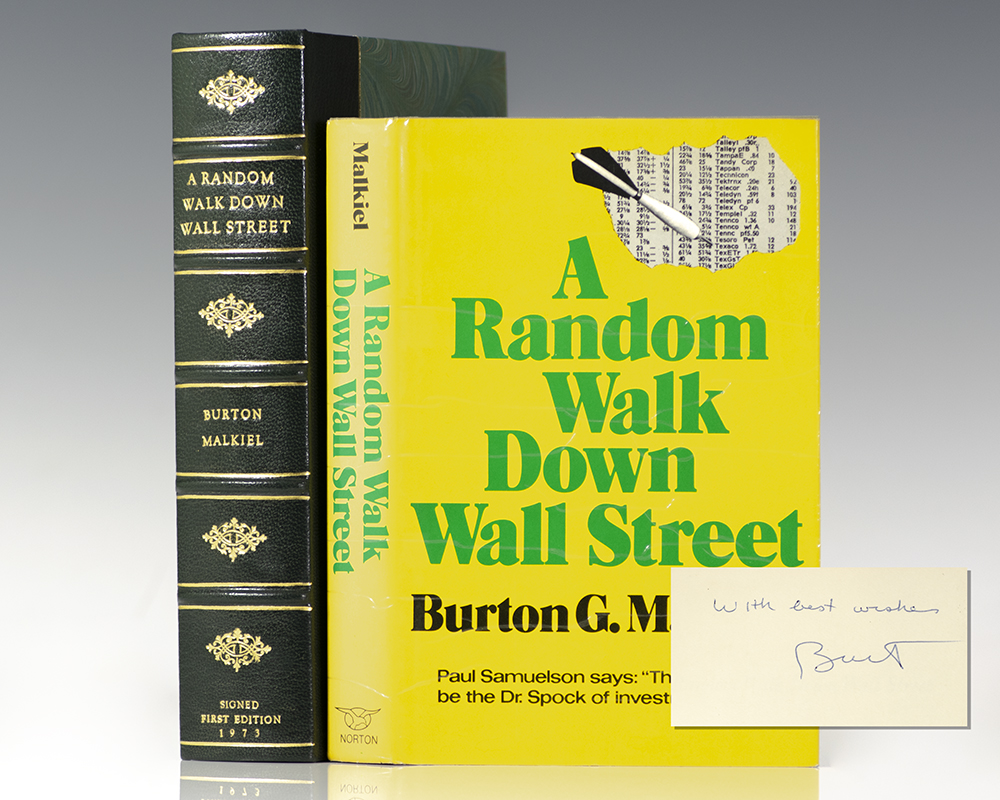Introduction
Malkiel examines some popular investing techniques, including technical analysis and fundamental analysis, in light of academic research studies of these methods.

The book comprises of:
Part I: STOCK AND THEIR VALUE
Part II: HOW THE PROS PLAY THE BIGGEST GAME IN TOWN
Part III: THE NEW INVESTMENT TECHNOLOGY
Part IV: A PRACTICAL GUIDE FOR THE RANDOM WALKERS AND OTHER INVESTORS
Malkiel has a similar critique for methods of selecting actively managed mutual funds based upon past performances. He cites studies indicating that actively managed mutual funds vary greatly in their success rates over the long term, often under-performing in years following their successes, thereby regressing toward the mean.
Summary
Malkiel addresses the most popular divide in stock analysis: technicals vs. fundamentals. The difference between technical and fundamental analysis is that in technical analysis, people use mathematical, statistical and trend analytics whereas, in fundamental analysis, people use the business analysis of the company.
According to the author, technical analysis doesn’t work real time. Malkiel writes. “It turns out that the correlation of past price movements with present and future price movements is very close to zero.”
In addition, investors can benefit from a critical analysis of the wealth of new information provided by academic researchers and market professionals—made comprehensible in prose accessible to everyone with an interest in investing.
Investors would be far better off buying and holding an index fund than attempting to buy and sell individual securities or actively managed mutual funds.
The book takes a hard look at the basic thesis that the market prices stocks so efficiently that a blindfolded chimpanzee throwing darts at the stock listings can select a portfolio that performs as well as those managed by the experts. Through the past forty years, that thesis has held up remarkably well. More than two-thirds of professional portfolio managers
have been outperformed by unmanaged broad-based index funds. Nevertheless, there are still both academics and practitioners who doubt the validity of the theory.
He states that technical analysis helps the brokerage firms in filling their big pockets. Random walk theory argues that the only consistently successful approach to investing is a strategy of buy and hold. Long-term investment allows you to take advantage of the stock trends that are predictable, which only emerge when you look at the market over a period of years. Better still, random walk suggests, an investor should focus on collected assets such as mutual funds and ETFs.
Fundamentalists select stocks based on a firm foundation of estimated intrinsic value. This theory suggests that sock values are roughly 90% rational and 10% psychological.
The book focuses on the multiple risks and theories associated with investments.
“What is hard to avoid is the alluring temptation to throw your money away on short, get-rich-quick speculative binges.”
Rules to stock picking:
- Growth increases, earnings, dividends, and likely the multiple the market will pay for those earnings.
- Never pay more for a stock than can reasonably justified by a firm foundation of value.
- Try to be where other investors will be a few months from now. Look for castle in the air stories that rest on a firm foundation.
- Ride the winners and sell the losers.
The value of a stock is determined by 3 factors:
- Initial dividend yield
- Growth rate of earnings
- Changes in valuation in terms of P/E or price/dividend ratios.
Malkiel advocates for investing in index funds. Avoid actively managed funds with high expense ratios and turnover. These funds are everywhere, and they consistently under-perform index funds.
It is clear that the ability to beat the averages consistently is extremely rare. Neither fundamental analysis of a stock’s firm foundation of value nor technical analysis of the market’s propensity for building castles in the air can produce reliably superior results. Even the pros must hide their heads in shame when they compare their results with those obtained by the dartboard method of picking stocks.
Sensible investment policies for individuals must then be developed in two steps. First, it is crucially important to understand the risk-return trade-offs that are available and to tailor your choice of securities to your temperament and requirements.
This edition provided a careful guide for this part of the walk, including a number of warm-up exercises concerning everything from tax planning to the management of reserve funds and a life-cycle guide to portfolio allocations. This edition has covered the major part of our walk down Wall Street—three important steps for buying common stocks. I began by suggesting sensible strategies that are consistent with the existence of reasonably efficient markets. The indexing strategy is the one I recommend most highly. At least the core of every investment portfolio ought to be indexed.
About the Author
- Born on August 28, 1932 in Boston.
- He had 2 wives and one son.
- In 1949, Malkiel graduated from Boston Latin School, and went on to receive his bachelor’s degree (1953) and his MBA (1955) from Harvard University.
- He eventually earned his Ph.D. in economics from Princeton University in 1964.

- Malkiel was elected to the American Philosophical Society in 2001.
- He served as a member of the Council of Economic Advisers (1975–1977), president of the American Finance Association (1978), and dean of the Yale School of Management (1981–1988).
- He also spent 28 years as a director of the Vanguard Group. He currently serves as Chief Investment Officer to software-based financial advisor, Wealthfront Inc. and as a member of the Investment Advisory Board for Rebalance.




